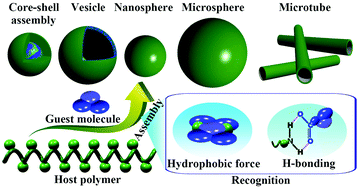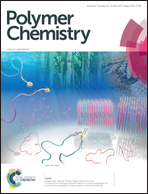A facile route to diverse assemblies by host–guest recognition†
Abstract
Self-assembly provides a powerful approach for generating complex materials with advanced functionalities. Currently it remains a great challenge to create hierarchically structured assemblies from materials with simple molecular structure. Further, successful clinical translation of polymer assemblies-based therapeutics requires facile yet effective strategies for their fabrication and cargo loading based on structurally simple and cost-effective starting materials. Herein we partly addressed these issues by an all-in-one strategy involving host–guest assembly via molecular recognition, in which carboxyl-bearing compounds serve as guest molecules, while N-substituted acrylamide homopolymers or their various copolymers are host materials. Assembly and therapeutic loading can be simultaneously realized by this one-pot approach, leading to superstructures across length scales and with multiple morphologies, such as micelle-like nanoparticles, vesicles, nano- and microspheres, microtubes, and onion-like multilayer structures. In addition to biomedical applications, superstructures generated by this simple and robust strategy have potential uses in templated synthesis, catalysis, optics, and microelectronics.


 Please wait while we load your content...
Please wait while we load your content...